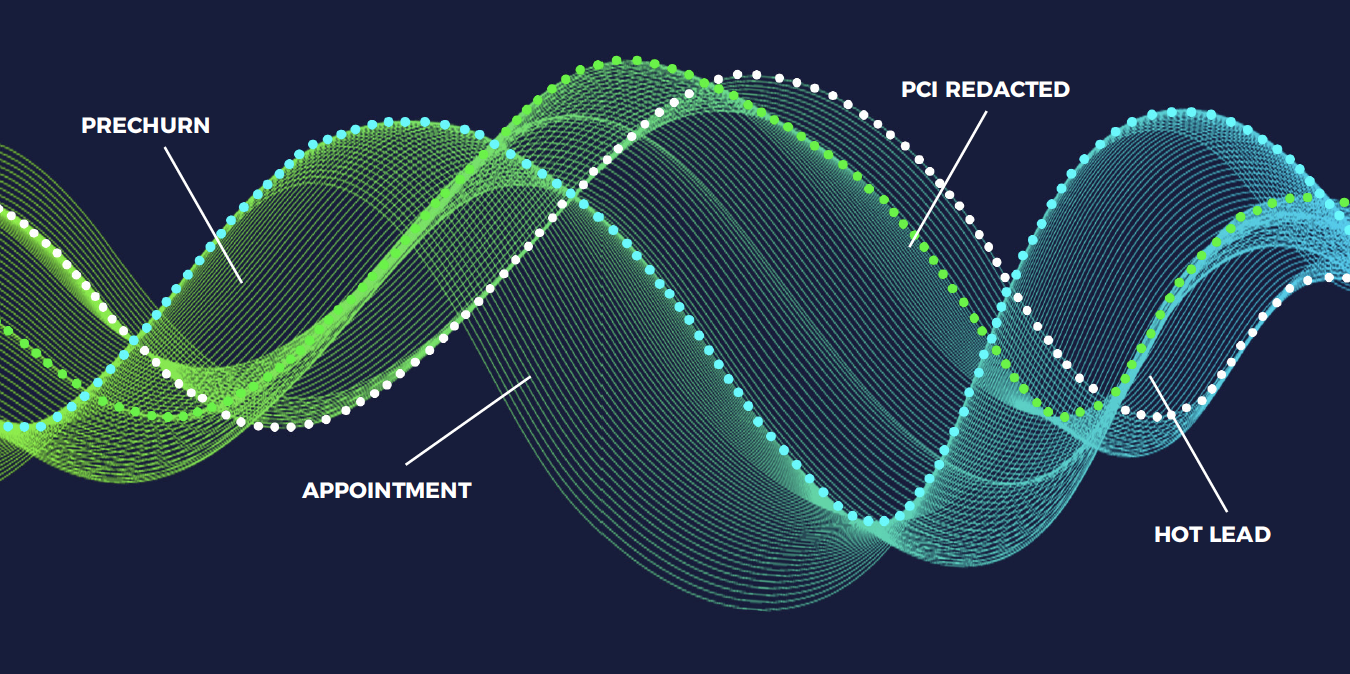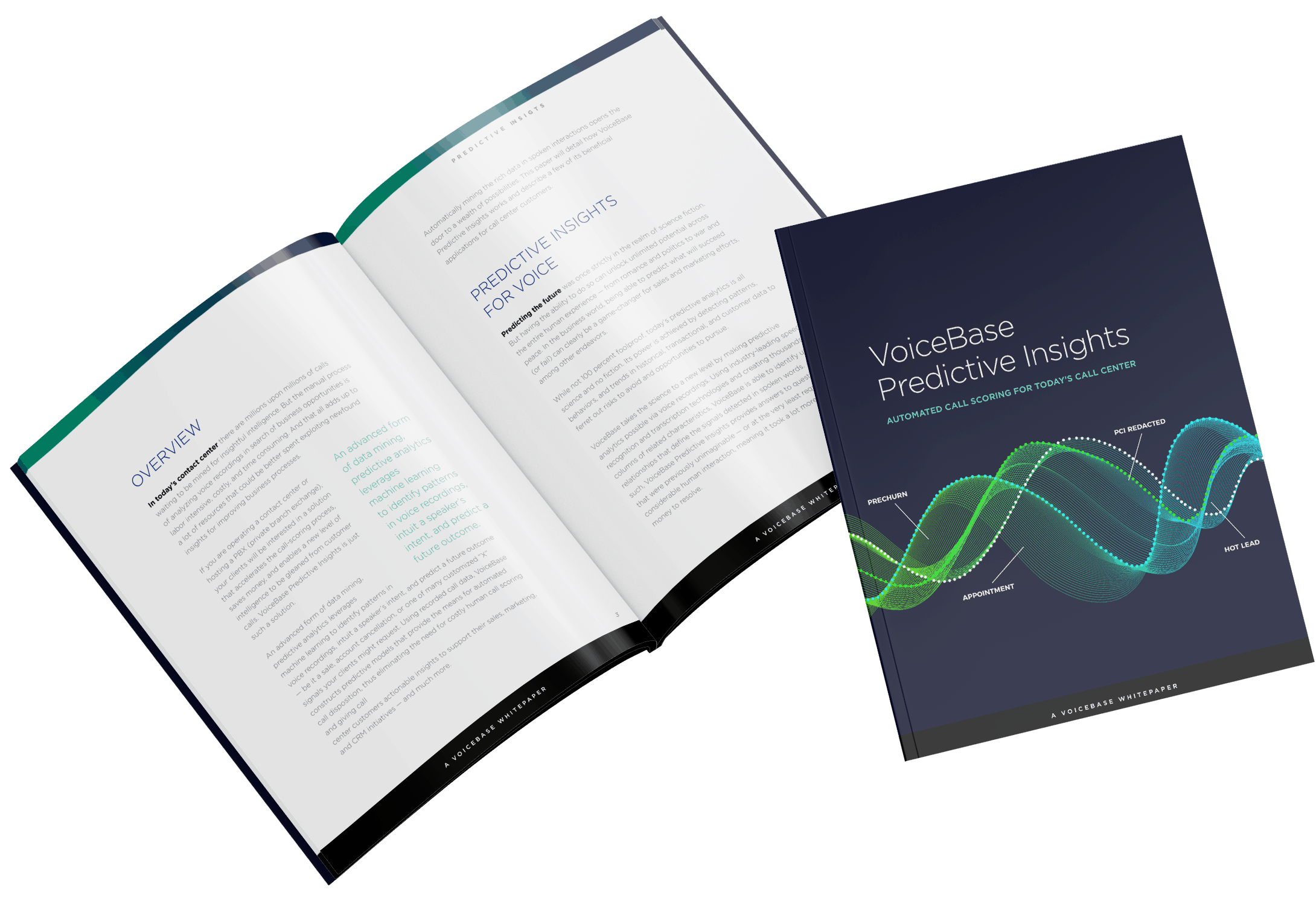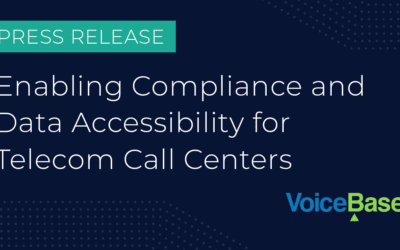AUTOMATED CALL SCORING FOR TODAY’S CALL CENTER
The contact center industry has faced more disruption over the past few months than it has for decades. This has driven businesses to rewrite their call center workbooks and adopt new models that will ensure their survival in the aftermath of the Covid-19 pandemic. Many businesses have thus realized the importance of investing in their call centers especially in Customer experience (CX), as opposed to the traditional lead magnets (quality products and competitive prices).

What is Predictive Analytics?
Predictive analytics is an advanced form of data mining that leverages machine learning to identify patterns in voice recordings, intuit a speaker’s intent, and predict a future outcome — be it a sale, account cancellation, or one of many customized “X” signals your clients might request. Using recorded call data, VoiceBase constructs predictive models that provide the means for automated call disposition, thus eliminating the need for costly human call scoring and giving call center customers actionable insights to support their sales, marketing, and CRM initiatives — and much more. Predictive analytics leverages machine learning to identify patterns in voice recordings, intuit a speaker’s intent, and predict a future outcome.
Automatically mining the rich data in spoken interactions opens the door to a wealth of possibilities. Predicting the future was once strictly in the realm of science fiction. But having the ability to do so can unlock unlimited potential across the entire human experience — from romance and politics to war and peace. In the business world, being able to predict what will succeed (or fail) can clearly be a game-changer for sales and marketing efforts, among other endeavors. While not 100 percent foolproof, today’s predictive analytics is all science and no fiction. Its power is achieved by detecting patterns, behaviors, and trends in historical, transactional, and customer data to ferret out risks to avoid and opportunities to pursue.
Imagine: What if a business could automatically mine every customer call for actionable data? Are there specific words or phrases associated with a high cancellation rate or closing a sale? Predicting customer behavior based on spoken interactions provides contact centers with a powerful new tool to drive business results. Previously this was only attainable using costly, time-consuming, and error-prone human call scoring. With VoiceBase Predictive Insights the potential is now enormous.
The predictive analytics process leverages ASR (Automatic Speech Recognition) to deliver precise speech-to-text transcripts and machine learning to cull a speaker’s intent from a given signal. Predetermined words or phrases taken from a transcript can be analyzed and applied to calls or snippets of spoken content to signal. For example: “Hot Lead,” “Rude Sales Rep” or “Immediate Follow-up Required.”
How Predictive Analytics Models are Built:
- VoiceBase obtains training data (recorded calls) from an end-user customer.
- The recordings are then tagged for select attributes in order to train VoiceBase’s machine learning model. Manual, human tagging can be managed by VoiceBase for the initial model set up or training data from customers can come pre-tagged; new calls can then be added and classified at any time.
- Once tagging is finished, VoiceBase builds an analytics model based on the individual context of the recordings and the specific classifications requested.
- VoiceBase trains each model and leverages neural networks and deep learning to detect patterns and isolate sought-after “X” signals to test the model for accuracy. (Note: New predictive models do not necessarily have to be built in every instance. VoiceBase also has a library of context-specific models ready for off-the-shelf deployment.)
Signal “X” and Other Customer Intelligence Insights
What kind of information can a VoiceBase predictive model elicit?
Signal “X”: VoiceBase builds models that detect just about anything — commonly referred to as an “X” signal in the analytics lexicon. Did the customer ask about pricing? Mention a competitor’s product? Ask for store hours and location? Using pre-scored call data, the technology can detect client-requested attributes in order to classify a call, predict an outcome, and trigger a response. The data can be optimized for any event a business is interested in detecting.
Auto Call Classification: Predict the result of a known set of call classifications (e.g., hot lead, appointment made, order placed, upset customer) for which training data has been provided. Results are classified by a simple “Yes/No” for the presence of any given signal.
Custom Analytics: Models for finding signal “X” are built using an end-user customer’s tagged training data. Models are trained leveraging Big Data techniques to detect specific signals as requested by the customer. VoiceBase automatically discovers pre-selected words or phrases in voice recordings and uses proprietary algorithms to extract them. VoiceBase technology is also able to detect nuanced signals such as energy and pitch of speech to intuit a speaker’s intent. Confidence scores are appended to various instances of signal detection to help gauge a model’s accuracy.
USE CASES FOR PREDICTIVE ANALYTICS
What can predictive analytics do for end-user customers? Applications vary across a full range of private- and public-sector entities.
Sales Optimization: Let’s say a customer has purchased 50,000 sales leads to call and wants to evaluate their quality. VoiceBase Predictive Insights can distinguish between hot prospects and non-prospects, and thus help customers make better-informed decisions for future purchases. The information garnered is not only valuable, it’s also actionable. Many SMBs have hosted phone systems that provide rudimentary call logs: How many calls were received and how long did they last? When were they received? Et cetera. By requesting to have VoiceBase’s end to end speech analytics platform into their PBX system, call centers can avail themselves of detailed reports that offer much more useful data: How many calls were from first-time callers? How many made appointments or cancelled? Did they call to complain or make a purchase? Do they want an estimate? Who referred them?
Download our detailed guide to leveraging predictive analytics in your contact center and discover what’s possible:



